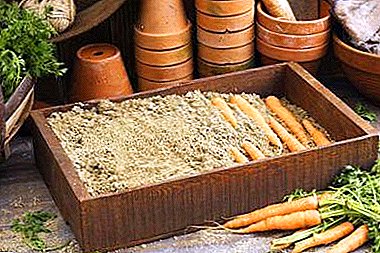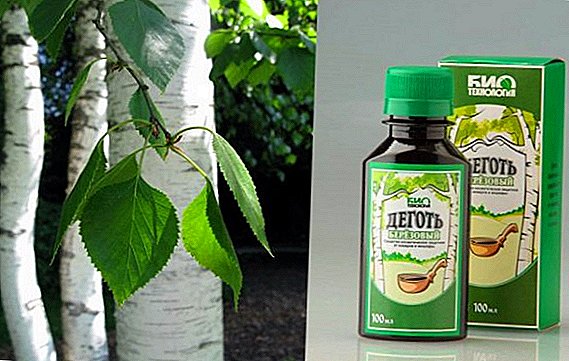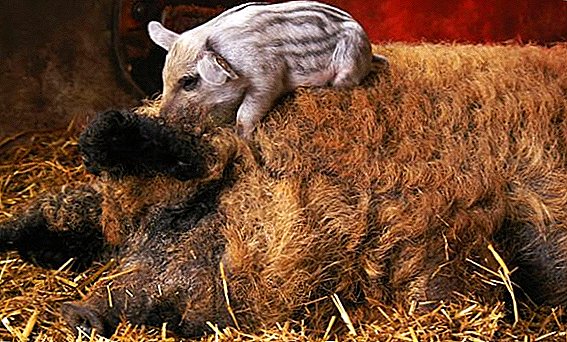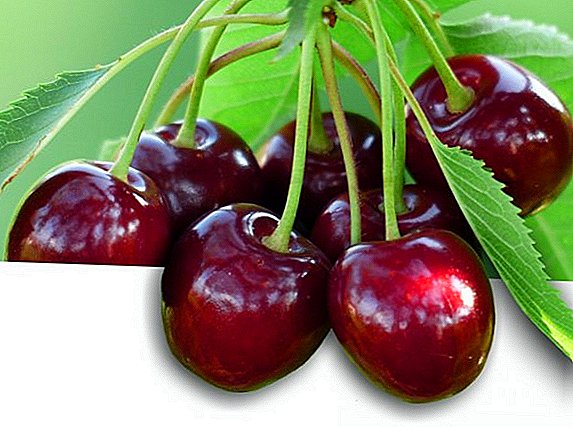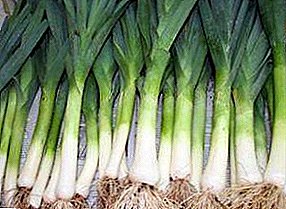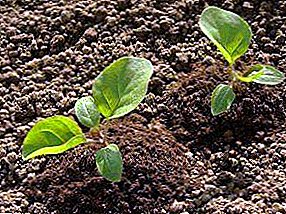
The Queen of Grapes (Queen of Vineyards) is an old variety with a rich history.
Nowadays, it is less common in household plots, but it was he who became the ancestor of many now popular grape varieties.
In this article we will tell you in detail what is the Queen of Grapes varietywhat features of its cultivation exist and what kind of care it needs.
You will also learn everything about possible diseases and pests, see how the grapes of this variety look in the photo.
What kind is it?
The Queen of the Vineyards is an early ripe white table variety. Differs in beautiful appearance and remarkable taste.
At the same time other early ripe varieties ripen with this grape: Crimson, Gala and Zabava.
Due to its low resistance to major grape diseases, the Queen is found on garden plots less and less often.. But this undeservedly forgotten variety has a lot of advantages that are worth mentioning.
 There are a lot of “royal” grapes bred by breeders, one of the most popular is black grapes - the namesake of the Spanish queen. Everything about the Isabella grape variety, as well as its advantages and disadvantages, the timing of collection and other features you can read on our website.
There are a lot of “royal” grapes bred by breeders, one of the most popular is black grapes - the namesake of the Spanish queen. Everything about the Isabella grape variety, as well as its advantages and disadvantages, the timing of collection and other features you can read on our website.Grape Queen variety description
 The queen of grapes is a medium grown variety that does not differ in frost resistance. She loves warmth no less than the famous and popular today Hadji Murat, Lily of the Valley and Ruta.
The queen of grapes is a medium grown variety that does not differ in frost resistance. She loves warmth no less than the famous and popular today Hadji Murat, Lily of the Valley and Ruta.
The load on the bush should not exceed 50-60 eyes. Autumn pruning is desirable to do a short, 4-5 eyes. With proper pruning, the vines ripening is good.
The leaves are small, dark green. The variety is characterized by an abundance of stepsons, which lead to thickening of the bush and lower yields. However, all stepchildren do not need to be removed, they are very fruitful. Cuttings root well.
Amethyst, Moldova and Galben Nou also possess bisexual flowers.
The berries are quite large, on average 6-10gr, golden brown, round. The flesh is crunchy, juicy, with a pronounced nutmeg aroma and a pleasant sweet aftertaste. The skin is thick, with a soft wax coating. In the berries of a small amount of small seeds. With a lack of moisture and thickening of the bush, the variety is prone to pea.
 If in your garden you grow not only grapes, but also other cultures you will be interested in detailed information about fruit trees and berry bushes. Read in the section on gardening all about growing cherries, pears, plums, red and black currants.
If in your garden you grow not only grapes, but also other cultures you will be interested in detailed information about fruit trees and berry bushes. Read in the section on gardening all about growing cherries, pears, plums, red and black currants.A photo
Photo varieties "Queen of Grapes":


Breeding history
The Queen of Grapes variety was bred in Hungary in 1925. The breeder M. Janusz worked on its creation.
This excellent variety was obtained by crossing the Queen Elizabeth and Pearl Sabot grape varieties. In 1939, the Queen was introduced to the USSR and began to be grown in the southern regions of Ukraine.
Later, the variety was zoned in the Donetsk, Zaporizhia, and Odessa regions and in the south of Russia. It can be grown in greenhouses even in Siberia..
Specifications
This is an early ripe variety, its ripening time in southern latitudes is 110-125 days. Productivity is quite high, about 6-10 kg from a bush.
The variety is not frost resistant and requires shelter for the winter, even in a relatively warm climate. In severe climatic conditions it is grown up in the heated greenhouses.
Cover also need varieties such as Crystal, Liana and Aladdin.
 Main features of the variety:
Main features of the variety:
- tolerates transportation and long-term storage;
- it is used both fresh, and for processing;
- differs not very high sugar content and is not damaged by wasps;
- stepchildren have high fruitfulness;
- without shelter withstands a drop in t to -21-22 C;
- it is better to grow this variety on winter-hardy rootstocks;
- the landing site must be warm and well lit;
- the variety is not resistant to mildew, oidium, gray rot and bacterial cancer;
- has a very good taste;
- not damaged phylloxera.
You can see the general characteristics of this variety in the table.:
| Grade assignment: | dining room |
| Ripening: | early maturing |
| Yield: | average |
| Bush growth: | medium tall |
| Frost resistance: | -22 |
| Colour: | golden amber with medium pruine |
| Taste: | harmonious, nutmeg |
| Bunch weight: | 500-600 g |
| Bunch density: | medium density |
| Berry weight: | 5-7 g |
| Berry shape: | rounded |
| Disease resistance: | unstable to mildew, oidium and requires preventive spraying. |
 As you know, the owners of summer cottages and their own gardens are trying to pick up varieties of their crops in such a way that they ripen gradually and enjoy the harvest throughout the season. We have prepared for you a series of articles on varieties of fruit trees and berry bushes with which we suggest you to get acquainted: cherries, apples, pears, plums, black and red currants.
As you know, the owners of summer cottages and their own gardens are trying to pick up varieties of their crops in such a way that they ripen gradually and enjoy the harvest throughout the season. We have prepared for you a series of articles on varieties of fruit trees and berry bushes with which we suggest you to get acquainted: cherries, apples, pears, plums, black and red currants.Diseases and pests
Unfortunately, the Queen of the vineyards is subject to many fungal diseases. At the dacha this variety is recommended to be planted separately from others in order to prevent infection. But with proper care and compliance with preventive measures to grow this variety is not difficult.
Most often, the Queen suffers from mildew, bacterial cancer, oidium and gray rot.
Mildew - one of the most dangerous diseases of grapes. It begins with the appearance on the leaves of yellow spots, which are then covered with a white pile, similar to mold. Very quickly, the disease begins to hit the shoots and berries. The crop does not have time to ripen and dries.
Over time, mildew can lead to the death of not only the sick bush, but also the infection of other plants. The methods of struggle are the timely pruning of grapes and the use of special chemicals.
Spraying with Bordeaux mixtures or copper sulfate solutions can be used.
Processing is preferably carried out before and after flowering. Affected shoots and leaves destroy.
Preventive measures against anthracnose, chlorosis, bacteriosis and rubella will not interfere.

Signs of Bacterial Grape Cancer
It occurs in weakened and frozen plants or when illiterate pruning and looks like a brown growth at the wound site. Over time, this growth increases and can destroy the entire plant.
To avoid this, it is necessary to observe precautions when pruning shoots, and in a timely manner feeding and spraying. With the appearance of growth, it is necessary to cut and process the cut with a solution of copper sulfate.
Oidium (powdery mildew) appears on the leaves in the form of a dusty grayish bloom. This disease is easily carried by air and in a short time can destroy the entire vineyard.
To combat it, you can use spraying with sulfur or complex preparations containing organic fungicides. Treatment should be carried out at the first signs of the disease, preferably in the morning or evening hours.
Gray rot affects the leaves, berries and grape shoots. To deal with it is very difficult.
To reduce damage and save grapes do not forget about preventive measures.:
- minimize fertilizing with nitrogen fertilizers;
- timely remove leaves that interfere with access to clusters of sunlight and air;
- apply sprays with special preparations at least 4 times per season.
Queen of the vineyards is a beautiful variety with many beneficial properties. Despite the tendency to disease and poor winter hardiness, it is great for growing in the summer cottage. With all the rules of planting and care, it will not be difficult to grow it even for novice gardeners.
The following varieties are excellent for growing on the household plot: Friendship, Lydia and Libya.



